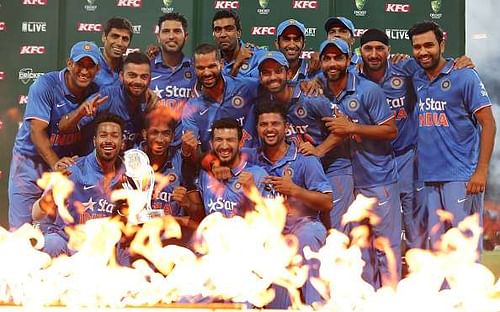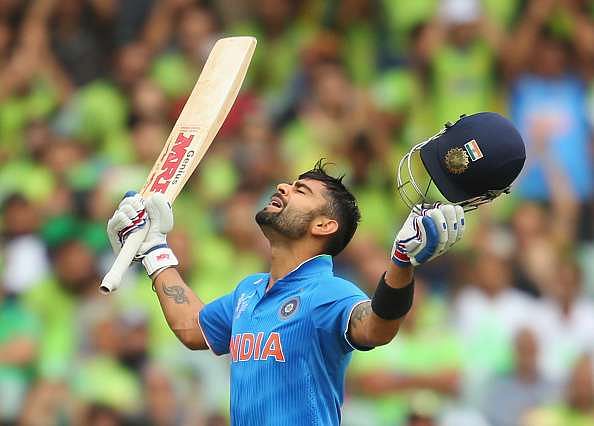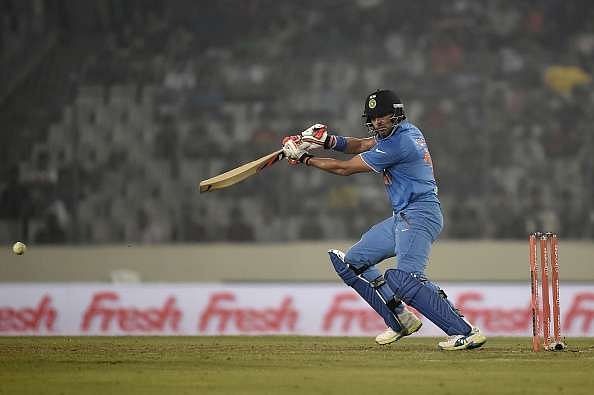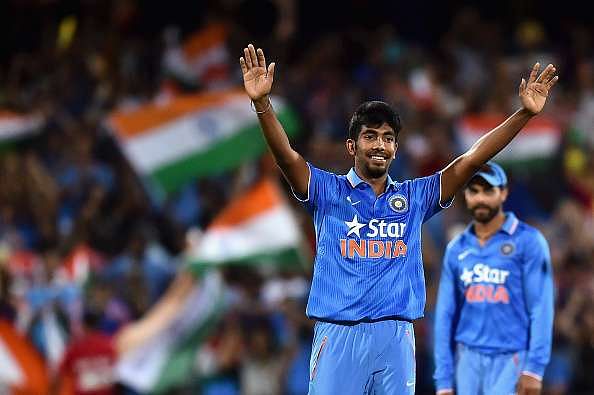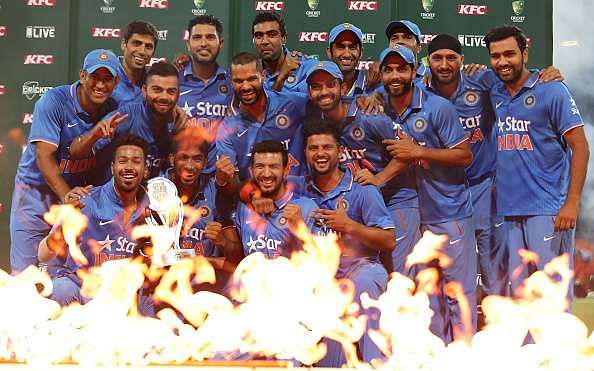
What makes Team India invincible in the T20 format?
As I write, India have clocked eight wins out of nine T20 games in 2016 and are out and out favourites for Asia cup as well as the upcoming T20 World cup. But are India really that invincible?
It may sound premature to call this team invincible in the first place - on the basis of just nine games, in a format which is still in very nascent stage. Worse, the opposition in each of these instances were limited. Australia were under strength, Sri Lanka are rebuilding, Bangladesh are lowest rank T20 nation (amongst test teams) and Pakistan have openly embraced retired cricketers replacing disappointment over the way their youngsters are shaping up. And yet, if you are the opposition, there is something eerily scary about this Indian T20 team.
T20 in itself is cricket’s most unpredictable format. To put in perspective, the IPL’s most successful team (and now dispelled) Chennai Super Kings had a 61% success ratio over eight seasons. The maximum wins a group winner has garnered in one IPL season (a true test of consistency) is 11/14 ie 78.5% - by Rajasthan Royals in 2008 and Kings XI in 2014.
Just like in football, the better team need not win on the day. One thumb rule about sports is - lesser the playing time, more chances of the underdog winning. Hence in test cricket, upset is a rare word. In English Premier league football, upset is heard every other weekend!
The Optimal Mix
India’s current T20 team, with 88% win ratio in 2016, admittedly, has got the desired concoction; finally. A mix of youthful aggression and experienced calm heads; a seaming all-rounder; mix of left-handed (3) and right-handed batsmen (5); left-arm seamer, right-arm seamer, left arm spinner, right arm spinner – all of whom capable of bowling in death overs; and a fielding unit where eight out of eleven can be termed ‘excellent’.
But the fairy tale doesn’t stop there. One close look at the numbers makes a scarier reading.
Unstoppable once set
Shikhar Dhawan has four single digits scores in his eight outings, that's 50% fail ratio. But his other three 40+ scores were decisive in wins. Not to forget a 26 off 9 balls, that set stage for the 200 chase at Sydney.
Rohit Sharma has had four scores of 15 or below in nine outings, that’s 45% fail ratio. But once set he has four-match winning scores. Simply put if Rohit crosses 20, he will become unstoppable.
Virat Kohli. Well, let’s keep him out of this discussion as he is batting on another planet!
In short the top order is aggressive, takes opposition by the collar and once set won’t spare till they have finished the job.
Get the job done
While sceptics can attribute the top order performance to form, the middle order makes more interesting reading. Raina has five scores between 20 and 49 and just two failures. He has done enough, just about enough, most times he walked out. He gave India the Sydney win on the last ball. Just about enough!
Yuvraj Singh has got to bat six times and managed to surpass the score of 15 only once – a calm 35 vs Sri Lanka at Mirpur, coming to bat at a dicey 70/3. But his two not out scores will remain etched in memory longer. Every cricket fan wants Yuvraj Singh to succeed – be it his 15* last over smashes at Sydney or the way he stood firm in 14*, soaking in a barrage of quality pace from Pakistan, after walking in at precarious 8/3. Simply put, the middle order is doing just what’s needed at that instant.
Hardik Pandya never got to bat at Australia and in his five subcontinent outings, has three failures. That’s 60% fail ratio and career batting average of a measly 12.5. What this doesn’t say is that Hardik’s two innings of 27 off 12 balls (vs Sri Lanka at Ranchi) and more prominently, 31 off 18 balls (vs Bangladesh at Mirpur), were decisive factors in the wins. At Mirpur, India were wobbling at 97/4 in the 15th over when the 22-year-old wreaked havoc.
Captain MS Dhoni’s stumpings have more news than his batting. With scores – 11*, 14, DNB, 2, 9*, DNB, 8*, 7*, 7* - it almost seems like the head of the family who, while resting all along, calmly locks the doors and gates before taking family for vacation.
Consistency is the key
Consistency is not a word often associated with Indian bowling. But their numbers in the game vs Bangladesh had a pleasing look. Nehra gave 21 off 4 overs, ditto Pandya, ditto Ashwin, ditto Bumrah. Jadeja gave 25 runs off 4 overs! There are no weaklings in the attack now. Even Hardik Pandya has nine sticks at under seven an over economy rate – a supreme bonus.
The first T20 over Ashwin bowled in 2016, at Adelaide, went for 17 runs! Since then, in the nine games, he has been stupendous – taken 16 wickets and tightened screws whenever called upon. He is India’s plan B – to bowl within powerplay, if the seamers get hit. But the seamers have been steady. Comeback man Ashish Nehra has picked 12 wickets and it will remain a mystery why he was kept in the wilderness, since being the best bowler in ODI WC semi-final win over Pakistan in 2011.
Jasprit Bumrah has picked nine sticks (some of them memorable yorker bowled outs) at less than 6.5 per over. When teams are packing their XI with four seamers, the head of the house, has kept full faith in his rookie seam attack and stuck, logically, to the combination that is expected to start all the WC T20 games. Yes, rookie. Bumrah and Pandya debuted in 2016 and Nehra has returned after close to five years – compare how your world has changed in five years!
Ticks off all boxes
MS Dhoni’s team ticks off all the boxes. At Asia cup, they booked their ticket to the finals, comfortably beating all test playing teams, accumulating a NRR of +1.5 and a game in hand (vs UAE) to warm up their substitutes bench! Every batsman in starting line-up seems capable of winning the match single handed, or doing the ‘just enough’ roles.
Every bowler is becoming tough to get away. And when plan A fails, there is more than adequate backup. Ravichandran Ashwin has batted only once in the nine games (in the only loss at Pune vs Sri Lanka). He top scored with 31* coming to bat at a hopeless 58/7. If you are the opposition, there is something eerily scary about this Indian T20 team.
